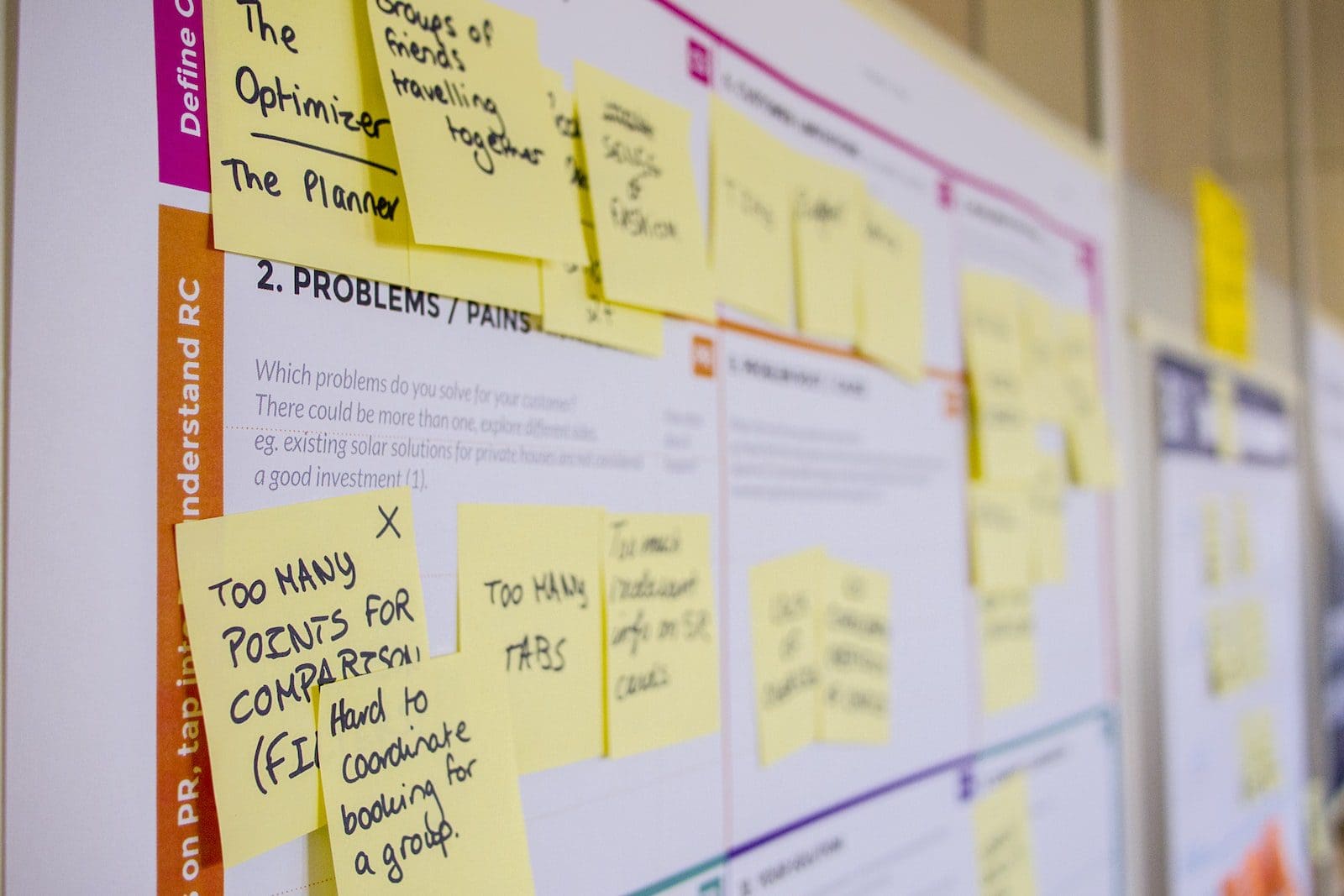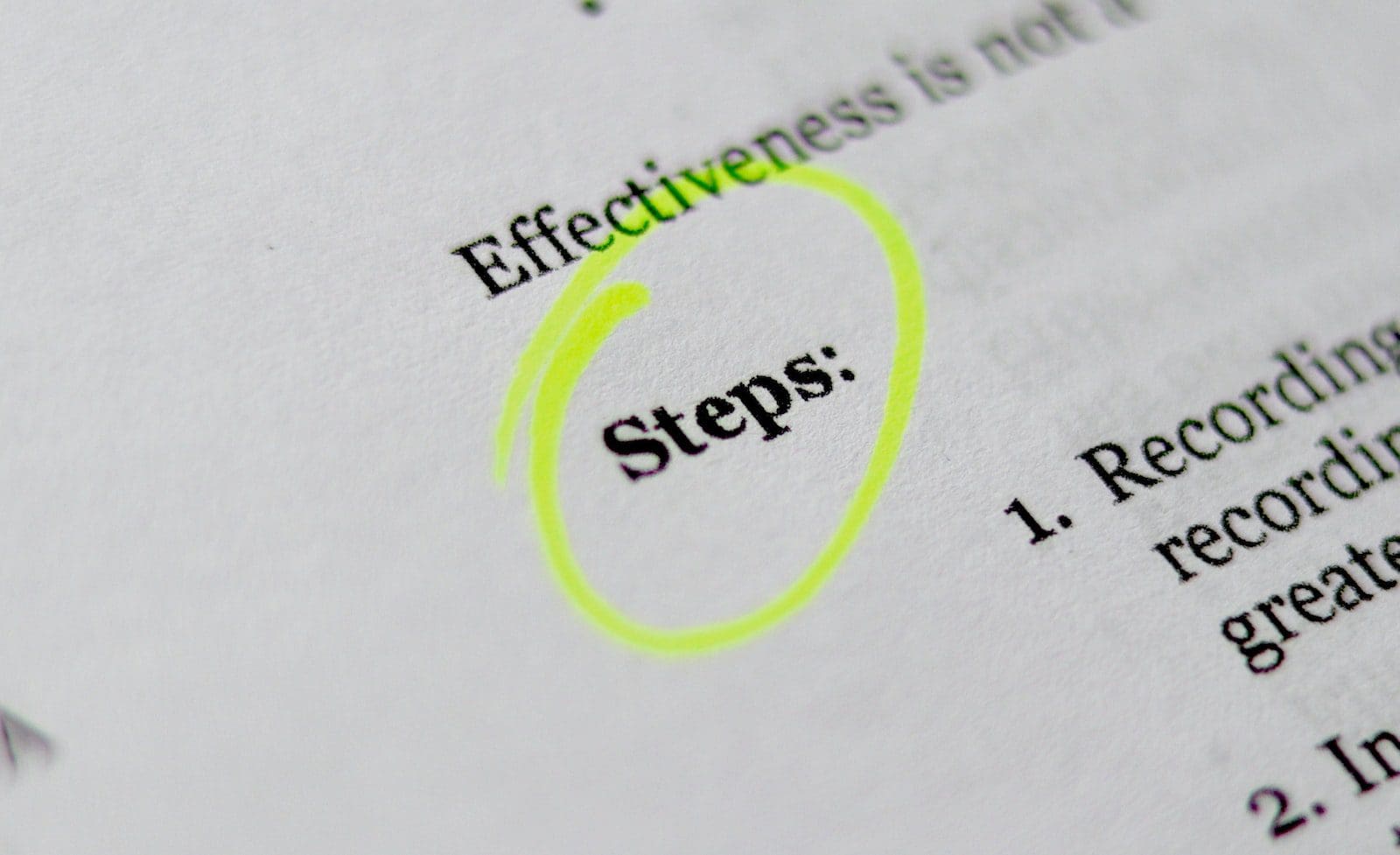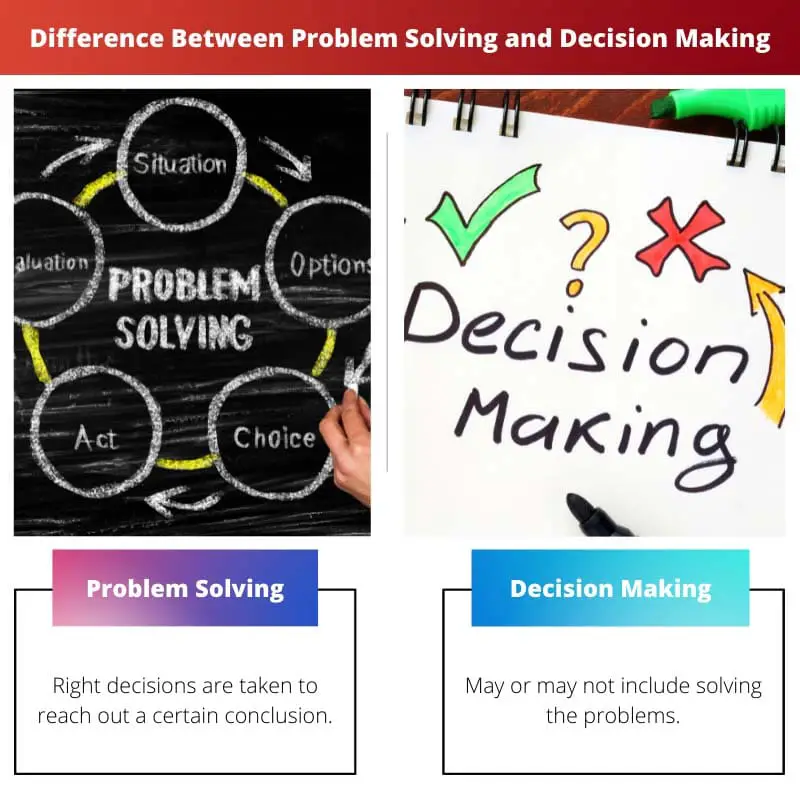Every person is, without a doubt, influenced by the worst-case situation for a significant period. Another difficult issue is not understanding the distinction between problem-solving and decision-making.
Decision-making and problem-solving are both psychological words that are frequently used interchangeably. Furthermore, it should be emphasised that these two terms are not interchangeable and are not synonymous.
Key Takeaways
- Problem-solving involves identifying and resolving issues or obstacles, while decision-making involves choosing different options or courses of action.
- Problem-solving is used to address a specific issue or challenge, while decision-making can be used in various contexts, such as business, personal life, or government.
- Problem-solving involves a step-by-step process of analysis and evaluation. At the same time, decision-making can be influenced by various factors such as personal values, emotions, or external pressures.
Problem Solving vs Decision Making
Problem-solving is the process of identifying and resolving a problem or challenge that is preventing an individual or organization from achieving its goal. Decision-making involves choosing a course of action or solution. This process can be complex and involve a variety of factors.

Problem-solving is a complex process that entails in-depth analysis. The identification of an issue is the first step in the problem-solving process. The main goal of problem-solving is to find the best solution.
Problem-solving is coupled with a specific goal. The results of problem-solving should be solution-oriented. The techniques and roads to resolution remain unknown when it comes to problem-solving. The purpose of problem-solving is to fix the problem or issue.
The process of decision-making leads to a final opinion and a course of action. The identification of opportunities is part of the decision-making process. The goal of the decision-making process is to avoid potential difficulties.
When making decisions, a variety of options are explored. The decision-making process can have a variety of results. The paths adopted in the event of decision-making are structured. The objectives of decision-making are unrelated to the resolution of a problem or issue.
Comparison Table
| Parameters of Comparison | Problem Solving | Decision Making |
|---|---|---|
| Consideration | Method | Process |
| Interconnection | Right decisions are taken to reach out a certain conclusion. | May or may not include solving the problems. |
| Type and involves | A complex, deep analysis required. | Final opinion, course of action. |
| Identification | Identification of a challenge. | Identification of opportunities. |
| Motive | Creating the right solution. | Avoiding potential problems. |
| Associated with | Clear objective | Different types of options are considered. |
| Outcomes | Solution-driven. | It varies |
| Paths/ ways | The ways to resolution are not known. | The paths taken are structured. |
| Goal | Correct the issue or problem. | Unrelated to the solving of an issue. |
What is Problem Solving?
Problem-solving is a technique that can be used to solve a problem. When it comes to problem-solving, making the appropriate judgments is critical to reaching a specific outcome.
Problem-solving is a difficult process that entails extensive research. Identifying a difficulty is a common step in the problem-solving process.
In simple words or layman’s terms, problem-solving is simply solving problems, as the name suggests. Here, either an individual or a group tries to solve a problem in this process.
This involves high analytical skills for reaching better and faster solutions. This process also includes gathering information, facts and following or working parallel with human intuition.
The primary goal of problem-solving is to find the best solution possible. In general, problem-solving is linked to a specific goal. Problem-solving results must be solution-oriented.
The techniques and roads to resolution are unknown in the case of problem-solving. The purpose of problem-solving is to resolve the problem or issue.

What is Decision Making?
Making a decision is seen to be a procedure. Depending on the situation, the decision-making process may or may not entail problem-solving.
The decision-making process culminates in the formulation of a conclusion and a plan of action. Identifying opportunities is an important part of the decision-making process.
Decision-making focuses on the actions, ways and alternatives that are used to solve a particular problem. This is also a result of cognitive function.
Sometimes a psychological aspect of an individual is taken into consideration while stressing about making decisions. The needs and wants are taken care of. This process can also be considered as continuous interaction with the surrounding environment.
The goal of the decision-making process is to avoid any potential issues. While making decisions, various types of options are explored. Decision-making can have a variety of results.
The paths that are taken in decision-making are structured. The decision-making goals have nothing to do with resolving a problem or issue.

Main Differences Between Problem Solving and Decision Making
- Problem-solving can be considered a method. On the other hand, decision-making is considered a process.
- At the time of problem-solving, taking the right decisions is important to reach out a certain conclusion. On the other hand, the decision-making process sometimes includes solving problems and sometimes does not.
- The method of problem-solving is complex and includes deep analysis. On the other hand, the decision-making process leads to taking a final opinion and a course of action.
- The method of problem-solving involves the identification of a challenge. On the other hand, the decision-making process involves identifying opportunities.
- Creating the right solution is an important motive for problem-solving. On the other hand, avoiding potential problems is the motive of the decision-making process.
- Problem-solving is associated with a clear objective. On the other hand, different types of options are considered while taking decisions.
- The outcomes coming from problem-solving should be solution-driven. On the other hand, the outcomes of the decision-making can vary.
- In the case of problem-solving, the ways and paths to resolution are not known. On the other hand, in the case of decision-making, the paths taken are structured.
- The goal of problem-solving is to correct the issue or problem. On the other hand, the goals associated with the decision making is not related to the solving of an issue or problem.

- https://scholarsbank.uoregon.edu/xmlui/bitstream/handle/1794/22321/slovic_189.pdf?sequence=1
- http://www.sci.brooklyn.cuny.edu/~kopec/cis718/fall_2005/2/Rafique_2_humanthinking.doc

I appreciate the article’s delineation of problem-solving’s complex analysis and decision-making’s structured paths, illustrating the contrasting elements and nuanced approaches of these essential processes.
Absolutely, the article’s comparison table provides a comprehensive overview, elucidating the multifaceted nature of problem-solving and decision-making and their interconnected role in addressing challenges and reaching conclusions.
I found the detailed analysis of problem-solving’s goal of correcting issues and the structured paths of decision-making to be particularly insightful, shedding light on their differing functions.
Indeed, the article’s delineation of these two processes clarifies how problem-solving involves methodical approaches towards resolution, while decision-making focuses on structured choices and actions.
The article’s comparison table effectively highlights the complexity and differences between problem-solving and decision-making, providing a comprehensive overview.
I agree, the table neatly summarizes the key factors of each process, making it easier to grasp the nuances and interconnectedness of problem-solving and decision-making.
I appreciate the detailed explanations of both problem-solving and decision-making processes, which are crucial elements in various aspects of life and business.
The article’s emphasis on the goal-oriented nature of problem-solving and the opportunity identification in decision-making is quite enlightening.
The distinction between problem-solving’s solution-driven outcomes and the structured paths taken in decision-making effectively portrays the dissimilarity in their objectives.
Indeed, understanding the deep analysis and unknown techniques of problem-solving, as opposed to the structured paths and goal of avoiding potential problems in decision-making, provides valuable insights.
Absolutely, the article makes it clear that these two processes have different motives and ultimate goals, shedding light on their multifaceted nature.
The detailed description of problem-solving and decision-making processes provides a comprehensive understanding of their intricacies and interplay in various contexts.
Absolutely, the article’s clear distinction between the two processes and the comparison table help in elucidating the methods and outcomes involved in problem-solving and decision-making.
The article effectively portrays the aims and mechanisms of problem-solving and decision-making, emphasizing the importance of clear identification and identification of opportunities in each process.
This article provides a clear distinction between problem-solving and decision-making, highlighting the different processes and goals involved.
Absolutely, the comprehensive comparison table is especially helpful in summarizing the disparities between problem-solving and decision-making.
I couldn’t agree more. The identification of opportunities in decision-making is a key difference, showing how it’s not just about solving problems, but also about making choices.
The article’s detailed explanation of problem-solving and decision-making sheds light on their distinctive motives, processes, and outcomes, providing valuable insights into their complex nature.
I couldn’t agree more. The article effectively highlights how problem-solving aims to resolve specific issues, while decision-making focuses on choosing alternatives and preventing potential problems.
Absolutely, the comprehensive descriptions underscore the different considerations and end goals of problem-solving and decision-making, elucidating their roles in addressing challenges and formulating solutions.